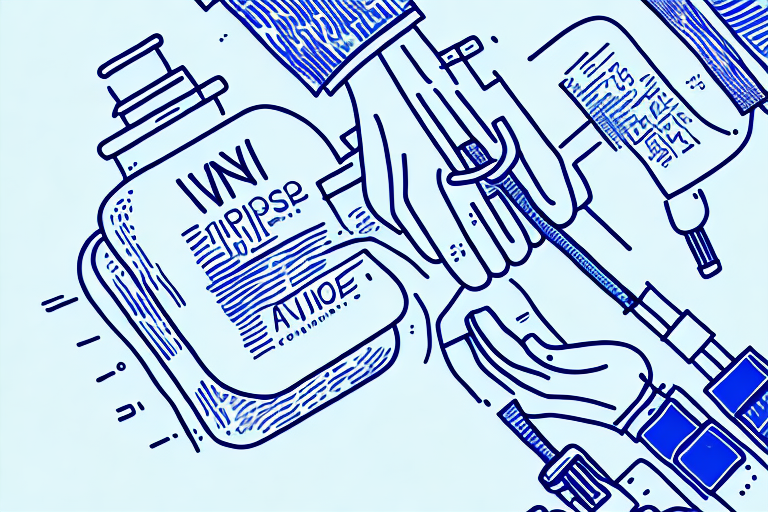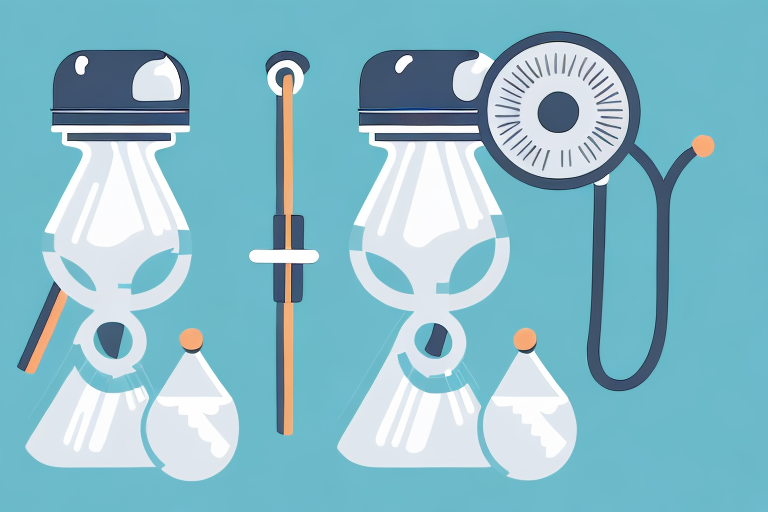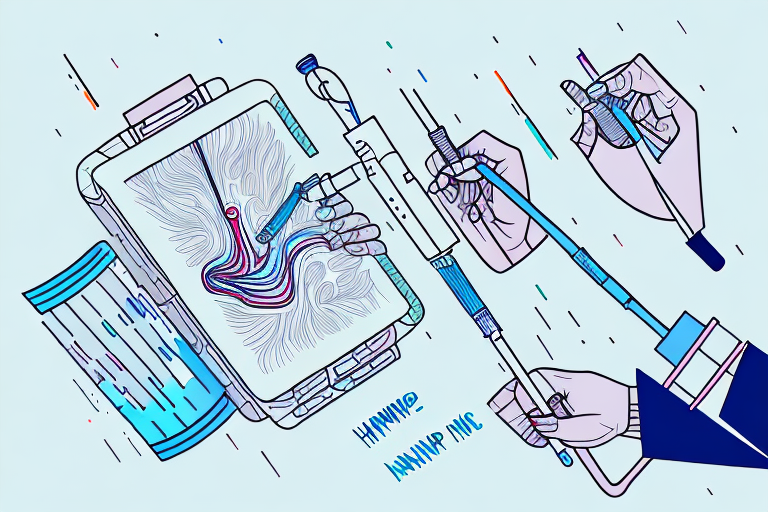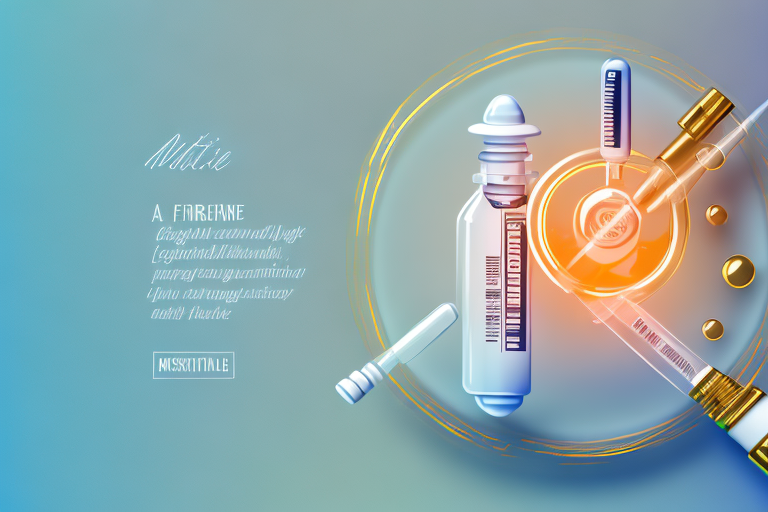Exploring the Connection Between Tattoos and IV Treatment
Tattoos are a beautiful form of self-expression that have been around for thousands of years, with a rich history that continues to evolve. But what happens when tattoos intersect with the world of medical procedures, specifically when it comes to intravenous (IV) treatment? As it turns out, the relationship between tattoos and IV treatment is intriguing and complex, with a multitude of factors that impact their connection. In this article, we will delve into the history of tattoos and medicine, the science behind how tattoos affect IV treatment, the risks involved, and guidelines for both medical professionals and patients. Additionally, we will explore personal experiences and perspectives from tattooed patients and medical professionals and discuss the advancements and potential future of these two worlds colliding.

The History of Tattoos and Medical Procedures
While tattoos have been around for thousands of years, it wasn’t until the modern era that they were routinely encountered in medical procedures. Before the nineteenth century, tattoos were mainly for cultural or social reasons, rather than medical, and had no connection to IV treatment. However, in the early days of the Industrial Revolution, tattoos became increasingly common among sailors and soldiers, who often received them for identification purposes in case of death or injury. As medical science advanced, and hospitals and clinics became more common, tattoos were seen not only as a form of identification but as potential complications in medical treatments, especially for IVs.
Ancient Tattoo Practices and Medicine
The ancient practice of tattooing was primarily for ritualistic purposes, but it also had some medicinal benefits. The Egyptians, for example, had tattoos that were meant to promote fertility and relieve migraines. However, the methods used were far different from modern-day tattooing, and the use of ink and needles was minimal or nonexistent. Additionally, ancient medical treatments often involved bloodletting or incisions to release harmful fluids from the body, which could have potentially impacted tattoos applied to the skin.
Other ancient civilizations, such as the Greeks and Romans, also used tattooing for medicinal purposes. They believed that tattoos could cure certain ailments and protect against evil spirits. The Greeks used tattoos to mark slaves and criminals, while the Romans used them to mark soldiers and gladiators. These tattoos were often simple designs, such as letters or symbols, rather than the elaborate designs seen in modern-day tattooing.
The Evolution of Tattoos in Modern Medicine
As the tattooing industry evolved and became more mainstream, so did its relationship with modern medicine. Initially, tattoos were seen as a potential health hazard, and medical professionals were advised to stay away from them. But as the numbers of individuals with tattoos increased, so did the need for medical professionals to understand how tattoos impact medical procedures, particularly IV treatment.
Today, attitudes towards tattoos in the medical field have changed, with many practices utilizing the skills of medical tattoo artists to improve medical treatments. Medical tattooing, also known as micropigmentation, is a specialized form of tattooing that involves the use of pigments to create permanent makeup or camouflage scars. It is also used to recreate the appearance of areolas after breast reconstruction surgery and to create the illusion of hair on the scalp for individuals with alopecia.
In addition to medical tattooing, there are also new technologies being developed to improve IV treatment for individuals with tattoos. One such technology is the VeinViewer, which uses near-infrared light to create a real-time image of the veins beneath the skin. This technology can help medical professionals locate veins more easily, even in individuals with tattoos or other skin abnormalities.
Overall, the relationship between tattoos and medicine has come a long way since the days of ancient civilizations. While tattoos were once seen as a potential health hazard, they are now being used to improve medical treatments and procedures, and new technologies are being developed to ensure that individuals with tattoos receive the best possible care.
The Role of Tattoo Artists in IV Treatment Preparation
While it may seem like tattoos and IV treatment are at odds with each other, tattoo artists can actually play a crucial role in preparing clients for successful IV treatment. By providing information about the location and size of their tattoos, as well as the type of ink used, tattoo artists can help medical professionals select the best IV needle sites and avoid potential complications. Additionally, tattoo artists can educate their clients about the importance of maintaining good skin health, which can help reduce the risk of scarring and other skin-related issues that could impact IV treatment.
The Psychological Impact of Tattoos on IV Treatment
Aside from the physical impact of tattoos on IV treatment, there is also a psychological component to consider. For many individuals, tattoos are a form of self-expression and can hold deep personal significance. The presence of a tattoo during IV treatment can evoke feelings of vulnerability, anxiety, or even shame, which can impact the patient's overall experience. Medical professionals should be aware of these potential emotional reactions and take steps to provide a supportive and non-judgmental environment for their patients.
The Future of IV Treatment and Tattooed Patients
As tattooing continues to grow in popularity, it's likely that more and more individuals with tattoos will require IV treatment. While there are certainly challenges to consider, such as the impact of tattoos on skin health and the potential for adverse reactions to tattoo ink, medical professionals and tattoo artists can work together to ensure the best possible outcomes for their patients. By staying informed about the latest research and best practices, and by providing compassionate care to all patients, regardless of their tattoo status, we can create a more inclusive and supportive healthcare environment for everyone.
Risks and Complications of Tattoos and IV Treatments
As with any medical procedure, there are risks involved when tattoos intersect with IV treatment. Here are a few examples of potential complications:
Infection Risks Associated with Tattoos
Any time the skin is punctured, there is a risk of infection. Individuals with tattoos are particularly vulnerable, and medical professionals need to be diligent in ensuring that the skin around the tattoo is sanitized before inserting the IV needle.
It is important to note that tattoos are not inherently dirty or unclean, but the process of getting a tattoo does involve puncturing the skin with needles. This means that there is a risk of introducing bacteria or other pathogens into the body. In order to minimize this risk, medical professionals should take extra care when inserting an IV needle into an area with a tattoo.
Difficulties in Locating Veins for IV Treatment
Tattoos can impact vein visualization for IV placement, particularly if they are large or in an area where veins are visible. This can make it more challenging for medical professionals to locate suitable placement for the IV needle.
It is important for medical professionals to be aware of the potential impact of tattoos on vein visualization and to take extra care when locating veins for IV placement. This may involve using ultrasound or other imaging techniques to locate suitable veins.
Allergic Reactions to Tattoo Ink
As previously mentioned, some tattoo pigments contain toxic substances that can cause adverse reactions in some individuals. These reactions can range from mild irritation to severe allergic reactions and can impact the patient's ability to receive IV treatment.
It is important for medical professionals to be aware of the potential for allergic reactions to tattoo ink and to take extra care when treating patients with tattoos. This may involve conducting allergy tests or using alternative tattoo inks that are less likely to cause adverse reactions.
In conclusion, while tattoos and IV treatments can coexist, there are potential risks and complications that medical professionals need to be aware of. By taking extra care and precautions, medical professionals can minimize these risks and ensure that patients with tattoos receive safe and effective IV treatment.
Guidelines for Medical Professionals and Tattooed Patients
For both medical professionals and patients with tattoos, there are specific guidelines that need to be followed to ensure safe and effective IV treatment. IV treatment is a common medical procedure that involves the administration of fluids, medications, or nutrition directly into the bloodstream through a vein. Here are a few examples of best practices for medical professionals and patients with tattoos:
Best Practices for IV Placement in Tattooed Patients
Medical professionals need to take extra care when locating veins for IV treatment in tattooed patients. Tattoo ink can make it difficult to visualize veins, which can lead to complications such as infiltration or extravasation. Best practices for IV placement in tattooed patients include searching for areas with minimal tattoo ink, utilizing veins that are not covered by the tattoo, or consulting with a medical tattoo artist for assistance. Medical tattoo artists can create a small tattoo mark over the vein to make it easier to locate.
Educating Patients on Tattoo Placement and IV Treatment
Tattooed patients should be educated on the potential risks involved with IV treatment. Patients should inform their healthcare provider about any tattoos they have and where they are located. Specific tattoo placements can cause complications, such as tattoos that cover veins on the wrist. Patients should also be aware of the importance of keeping their tattoos clean and free from infection to reduce the risk of complications during IV treatment.
The Role of Medical Tattooing in IV Treatment
Medical tattooing has become increasingly popular in recent years, mainly as a method for patients that have undergone mastectomies. However, it has also become a useful tool for marking specific veins or other areas for IV treatment, especially in patients with tattoos or scar tissue. Medical tattooing involves the use of pigments to create permanent marks on the skin. These marks can be used to identify veins or other areas that need to be avoided during IV treatment or surgery.
In conclusion, following the guidelines for medical professionals and patients with tattoos is essential to ensure safe and effective IV treatment. Medical professionals should take extra care when locating veins in tattooed patients, and patients should be educated on the potential risks involved with IV treatment. Medical tattooing can also be a useful tool for marking specific veins or other areas for IV treatment, especially in patients with tattoos or scar tissue.
Personal Experiences and Perspectives
Personal experiences and perspectives provide valuable insights into how tattoos and IV treatments intersect. Here are a few examples:
Stories from Tattooed Patients Receiving IV Treatment
Many tattooed patients have unique experiences when receiving IV treatment, often finding that their tattoos impacted the process in unexpected ways. For example, one patient with a full sleeve tattoo found that the IV needle was exceptionally painful to insert due to the level of scar tissue present.
Another patient reported feeling self-conscious about their tattoos and worried that medical professionals would judge them. This patient found that their concerns were unfounded, as the medical staff were professional and non-judgmental.
On the other hand, some tattooed patients have reported feeling uncomfortable when their tattoos are commented on by medical staff. One patient reported feeling objectified when a nurse made a comment about the design of their tattoo.
Medical Professionals Share Their Insights and Challenges
For medical professionals, tattooed patients can present unique challenges when it comes to IV treatment. Some have found that utilizing vein visualization technology or consulting with a medical tattoo artist can be helpful in locating suitable veins for IV placement.
Other medical professionals have reported feeling unsure about how to approach the topic of tattoos with their patients. Some worry that discussing tattoos may be seen as unprofessional, while others feel that it is important to acknowledge and address any potential issues related to tattoos and medical treatment.
One medical professional shared their experience of treating a patient with a large chest tattoo that made it difficult to monitor their heart rate. The medical team had to use alternative methods to monitor the patient's heart rate, which added extra time and complexity to the treatment process.
Tattoo Safety and IV Treatment
While tattoos themselves do not necessarily impact the safety of IV treatment, it is important for both patients and medical professionals to be aware of the potential risks. For example, if a patient has a fresh tattoo, it may be more difficult to find a suitable vein for IV placement due to swelling or inflammation in the area.
It is also important for patients to inform their medical team about any tattoos they have, as this information can help guide treatment decisions and ensure the best possible care.
Overall, the intersection of tattoos and IV treatment is complex and multifaceted. By sharing personal experiences and perspectives, both patients and medical professionals can gain a deeper understanding of the unique challenges and opportunities presented by this intersection.
The Future of Tattoos and IV Treatment
As the worlds of tattoos and medicine continue to evolve, so will their relationship. Here are a few potential advancements and possibilities for the future:
Technological Advancements in Tattoo and IV Treatment
New technologies are continually being developed that can improve medical treatments, and the tattooing industry is no exception. One potential advancement is the development of inks that are more compatible with the body and less toxic. Currently, tattoo ink can cause allergic reactions and inflammation, which can lead to complications for those with sensitive skin. The development of safer inks could make tattoos a more viable option for those with allergies or other medical conditions.
In addition, there are technologies being developed that can better locate veins under the skin. This is particularly important for those who require regular IV treatments, such as patients undergoing chemotherapy or those with chronic illnesses. Improved vein-finding technologies could make the process of inserting an IV less painful and more efficient, improving patient comfort and reducing the risk of complications.
The Growing Acceptance of Tattoos in the Medical Field
As tattoos become more mainstream, it's likely that the medical community will become more accepting of them. This could lead to more medical professionals receiving training on tattoos and IV treatment, which could improve patient outcomes. For example, medical professionals with tattoos may be better able to empathize with patients who have tattoos, and may be more sensitive to the unique needs and concerns of this population.
Additionally, increased collaboration with medical tattoo artists could lead to more effective and aesthetically pleasing outcomes for patients. Medical tattoo artists are trained to create tattoos that are specifically designed to help patients with medical conditions, such as scars, burns, and breast reconstruction. By working with medical professionals, these artists could help to improve the quality of life for patients with these conditions.
Overall, the future of tattoos and IV treatment is bright. With continued technological advancements and growing acceptance in the medical community, patients can look forward to safer and more effective treatments, as well as improved outcomes and quality of life.
Conclusion
The relationship between tattoos and IV treatment is complex, with many factors that impact their connection. While there are risks involved, proper education and care can ensure safe and effective treatment for patients with tattoos. With advancements in technology and changing attitudes towards tattoos in the medical field, it's an exciting time for the intersection of these two worlds.
© 2024 IV Fluids | All Rights Reserved | Powered By OMG Marketing











